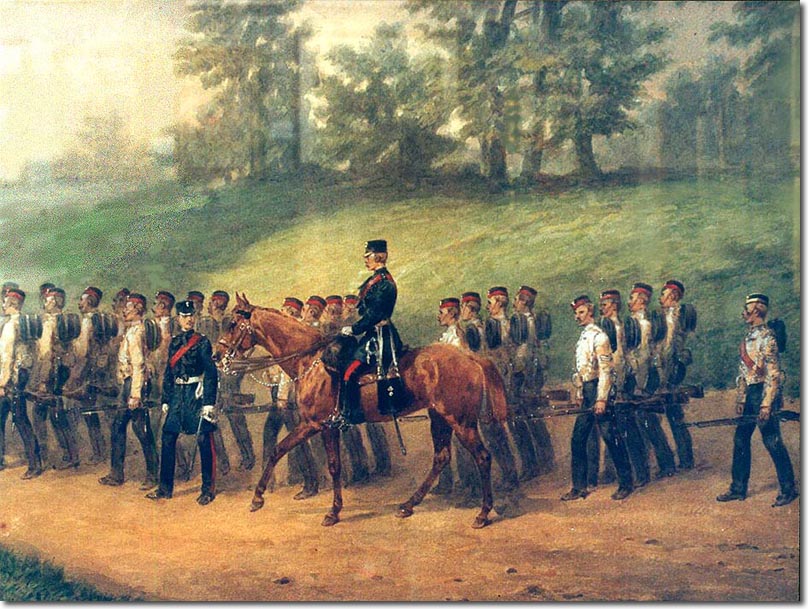|
|

 |
|
The men are in waist-length white jackets and pill-box caps, and the officers are in dark blue frockcoats and peaked forage caps. The white jackets were worn as undress garments throughout the army up until c1830. They originated as reconstituted waistcoats which had been made redundant at the end of the 18th century when the mens' coats were worn buttoned up. In 1830 the infantry were ordered to wear red shell jackets in undress but the Guards and the Highland Regiments retained the white jacket. The Guards wore it until the First World War and for some years after. Two NCOs can be seen on the right. A lance-corporal looking towards us, has two stripes and the same uniform as the men. The sergeant at the back is distinguished by his gold laced cap and red sash of office. All the men carry the Martini Henry rifle at the trail, and have an ammunition pouch on the front of the waist-belt, and a long bayonet on their left hip. Water-bottles can also be seen on their right side.
The military painter Orlando Norie painted several pictures of the Grenadier Guards at around this time. He depicted the Grenadiers marching in this order of dress, both with folded greatcoats on their backs and also with rolled blankets over their left shoulder. Another painting shows the regiment at skirmish practice with the men in white jackets but no greatcoat or blanket. That painting is dated 1880 and shows the officers wearing frockcoats without rank badges. In 1881 officers badges of rank were placed on shoulder straps and in the painting we see here the officers have badges on their shoulder straps. The mounted officer is either the adjutant or the CO and he has knee boots, breeches and sabretache. The dismounted officer has trousers and no sabretache. The plain black leather sabretache is suspended from a white leather waist-belt by two white slings and has a grenade badge in the middle. This badge was changed c1890 to the Sabretache Badge with crown, garter and cypher. |
Armed Forces | Art and Culture | Articles | Biographies | Colonies | Discussion | Glossary | Home | Library | Links | Map Room | Sources and Media | Science and Technology | Search | Student Zone | Timelines | TV & Film | Wargames